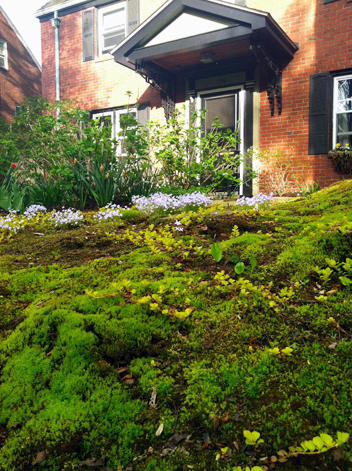LDS Philosophy
 Collaborating with Nature + You
Collaborating with Nature + You
The key to creating a sustainable landscape is understanding that the design process should be considered first. Plant selection, implementation, and maintenance build on the design process, each having sustainability as a major consideration.
In conventional landscapes, decisions are often made on aesthetics alone. Soil properties and micro-climate conditions aren’t considered. The design ends up working against nature, altering the soil to suit the plants. The gardener has to fertilize and water constantly so that the plants will survive—and they still don’t thrive because they cannot adapt to the conditions in your garden.
 A sustainable garden can be just as beautiful as any other landscape and can provide a wealth of health and environmental benefits. Here are just a few:
A sustainable garden can be just as beautiful as any other landscape and can provide a wealth of health and environmental benefits. Here are just a few:
Personal Restoration: Research shows that, for both adults and children, encounters with everyday nature—spending time in a garden setting—restores the ability to concentrate, calms feelings of anxiety, and reduces aggression.
Wildlife habitat, biological diversity and pollination: The plants we grow in our gardens have the critical role of sustaining, directly or indirectly, all of the animals with which we share are living spaces.

Economic Benefits
Landscaping can bring a recovery value of 100-200% at selling time. Kitchen remodeling brings 75-125%. (Money Magazine)
Strategically planted trees and shrubs can make your home more energy efficient, reducing cooling and heating costs by up to 40%.
(Landscape for Life)
By spending 10% of the value of your home on the installation of a quality, low-maintenance landscape, you could boost the resale by 15%, earning back 150% or more or your investment. (Smart Money Magazine)






